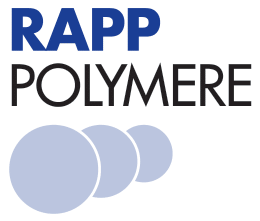α,ω-Bis-Pyridyldithio PEG
α,ω-Bis-OPSS PEG
€ 399,00*
1120000-44.1G
Product information
The OPSS functional group at each end of the PEG linker molecule allows selective and reversible attachment to other molecules with complementary functional groups, such as thiol groups on proteins or peptides. This can be achieved through thiol-disulfide exchange reactions, which result in the formation of disulfide linkages between the two molecules. Another possible application includes the formation of free thiols in solution and subsequent pegylation of transition metal surfaces. PEG linker molecules with OPSS endgroups are particularly useful for the reversible PEGylation of proteins and peptides, as the disulfide bond formed between the OPSS group and the thiol group of the substrate can be cleaved under reducing conditions, such as with the addition of a reducing agent like dithiothreitol (DTT) or tris(2-carboxyethyl)phosphine (TCEP). This allows the recovery of the unmodified protein or peptide, which can be useful in certain applications.
Literature
L 83 α,ω-Bis-Pyridyldithio PEGs (OPSS PEGs)
- Lu, H. B.; Campbell, C. T.; Castner, D. G. Attachment of Functionalized Poly(Ethylene Glycol) Films to Gold Surfaces. Langmuir 2000, 16 (4), 1711-1718. doi: 10.1021/la990221m
- Chong, S.-F.; Chandrawati, R.; Städler, B.; Park, J.; Cho, J.; Wang, Y.; Jia, Z.; Bulmus, V.; Davis, T. P.; Zelikin, A. N.; Caruso, F. Stabilization of Polymer-Hydrogel Capsules via Thiol-Disulfide Exchange. Small 2009, 5 (22), 2601-2610. (no doi)
- Natarajan, A.; Xiong, C.-Y.; Albrecht, H.; DeNardo, G. L.; DeNardo, S. J. Characterization of Site-Specific ScFv PEGylation for Tumor-Targeting Pharmaceuticals. Bioconjug. Chem. 2005, 16 (1), 113-121. doi: 10.1021/bc0498121
- Liu, J.; Gu, C.; Cabigas, E. B.; Pendergrass, K. D.; Brown, M. E.; Luo, Y.; Davis, M. E. Functionalized Dendrimer-Based Delivery of Angiotensin Type 1 Receptor SiRNA for Preserving Cardiac Function Following Infarction. Biomaterials 2013, 34 (14), 3729-3736. doi: 10.1016/j.biomaterials.2013.02.008
- Dam, H. H.; Caruso, F. Construction and Degradation of Polyrotaxane Multilayers. Adv. Mater. 2011, 23 (27), 3026-3029. doi: 10.1002/adma.201101210
- Tardy, B. L.; Dam, H. H.; Kamphuis, M. M. J.; Richardson, J. J.; Caruso, F. Self-Assembled Stimuli-Responsive Polyrotaxane Core-Shell Particles. Biomacromolecules 2014, 15 (1), 53-59. doi: 10.1021/bm401244a

